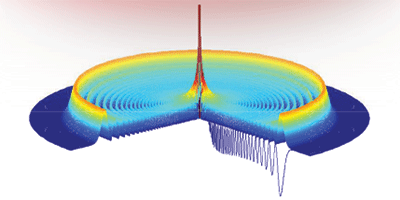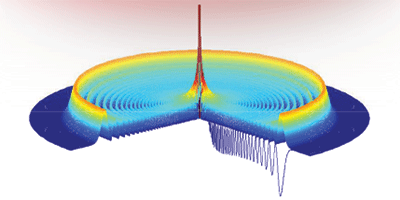Ripples in a BEC Pond
In a Bose-Einstein condensate all of the atoms occupy the same quantum ground state, forming a sort of tranquil atom “sea.” Robin Côté and colleagues at the University of Connecticut in Storrs explored the density ripples this sea would exhibit in the presence of a few highly excited atoms. Their theoretical findings might inspire new ways of using a BEC to image an atom’s quantum wave function or to control the formation of exotic molecules.
The authors model a uniform condensate of atoms, a small number of which are in highly excited “Rydberg” states. Such atoms have electrons whose orbits extend a few nanometers or more from their ionic cores and exert an attractive force on the neutral atoms in the condensate.
Experiments have already shown that Rydberg states can be created and controlled in BECs for periods long enough to study their effects. The calculations by Côté and his colleagues suggest what these observable effects might be for BECs whose atoms are either strongly or weakly interacting. Strong interactions make the BEC “sticky,” and in this case, the authors find that the condensate atoms congregate where the amplitude of the Rydberg electron’s quantum wave function is largest. These density modulations could be detected with atom imaging techniques, offering a way to image a wave function that is otherwise hard to see. For weak interactions, the BEC is “smooth” and the authors find that each Rydberg electron induces a milder density distortion. The effect, they show, would induce an attractive force between two nearby Rydberg atoms that could be used to engineer molecules.
This research is published in Physical Review Letters.
–Jessica Thomas





